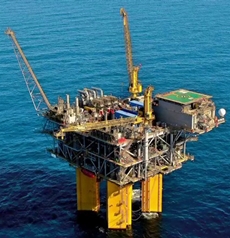Govt unveils uniform licensing policy for hydrocarbon sector
11 Mar 2016
In a major policy drive to give a boost to petroleum and the entire hydrocarbon sector, the government on Thursday unveiled a series of initiatives, including a uniform licensing policy for exploration and production, an open acreage policy, easy to administer revenue sharing model and marketing and pricing freedom for the crude oil and natural gas producer.
 The union cabinet and the Cabinet Committee on Economic Affairs at its meeting on Thursday announced an innovative policy for future, which provides for a uniform licensing system to cover all hydrocarbons such as oil, gas, coal bed methane etc under a single licensing framework.
The union cabinet and the Cabinet Committee on Economic Affairs at its meeting on Thursday announced an innovative policy for future, which provides for a uniform licensing system to cover all hydrocarbons such as oil, gas, coal bed methane etc under a single licensing framework.
The cabinet also decided to cancel the award of Ratna offshore field to Essar Oil Limited and assign it to the original licensee, ONGC.
The new policy provides for marketing and pricing freedom for new gas production from deepwater, ultra deepwater and high pressure-high temperature areas.
There is a provision for grant of extension to the production sharing contracts for small, medium sized and discovered fields.
The present policy regime for exploration and production of oil and gas, known as New Exploration Licensing Policy (NELP), has been in existence for 18 years. Over the years, the policy has created various problems.
At present, there are separate policies and licences for different hydrocarbons. There are separate policy regimes for conventional oil and gas, coal-bed methane, shale oil and gas and gas hydrates. Different fiscal terms are also in force for allocation of acreages for exploration for different hydrocarbons.
In practice, however, there is overlapping of resources between different contracts. Unconventional hydrocarbons (shale gas and shale oil) were unknown when NELP was framed.
This fragmented policy framework has led to inefficiencies in exploiting natural resources. For example, while exploring for one type of hydrocarbon, if a different one is found, it will need separate licensing, adding to cost.
The main facets of the new policy are:
- Uniform licence for exploration and production of all forms of hydrocarbons,
- An open acreage policy,
- Easy to administer revenue sharing model and
- Marketing and pricing freedom for the crude oil and natural gas produced.
The decision is expected to enhance domestic oil and gas production, bring substantial investment in the sector and generate sizable employment. The policy is also aimed at enhancing transparency and reducing administrative discretion.
The uniform licence will enable the contractor to explore conventional as well as unconventional oil and gas resources, including CBM, shale gas/oil, tight gas and gas hydrates under a single licence.
The concept of open acreage policy will enable E&P companies choose the blocks from the designated area.
The present fiscal system of production sharing based on investment multiple and cost recovery / production linked payment will be replaced by an easy-to-administer revenue sharing model. The earlier contracts were based on the concept of profit sharing where profits are shared between government and the contractor after recovery of cost.
Under the profit sharing methodology, it became necessary for the government to scrutinise cost details of private participants and this led to many delays and disputes. Under the new regime, the government will not be concerned with the cost incurred and will receive a share of the gross revenue from the sale of oil, gas etc. This is in tune with government's policy of ''Ease of Doing Business''.
Considering the higher risks and costs involved in exploration and production from offshore areas, the policy provides for lower royalty rates for such areas compared to NELP royalty rates to encourage exploration and production.
A graded system of royalty rates have been introduced, in which royalty rate decreases from shallow water to deepwater and ultra-deep water. At the same time, royalty rate for onland areas has been kept intact so that revenues to the state governments are not affected.






















